India, a land of extraordinary diversity, captivates with its vibrant culture, historical depth, and stunning landscapes. Spanning from the towering Himalayas in the north to the serene backwaters of Kerala in the south, India offers a unique blend of experiences.
The geography of India includes majestic mountains, expansive deserts, lush forests, and pristine beaches. The Himalayas offer adventure opportunities, while the Thar Desert showcases arid beauty. Kerala’s backwaters provide tranquil escapes, and Goa’s beaches are perfect for relaxation.
India’s cultural heritage is a rich tapestry of traditions, languages, and religions. Celebrating festivals like Diwali and Holi, the country is known for its colorful traditions. With 22 official languages, linguistic diversity is profound. Indian cuisine, famous for its bold flavors and aromatic spices, varies regionally, offering a delightful gastronomic journey.
India’s history is marked by ancient civilizations, mighty empires, and colonial legacies. The Indus Valley Civilization and Mughal architecture, exemplified by the Taj Mahal, highlight its historical grandeur. British colonial landmarks add to the country’s architectural diversity.
Tourist attractions include the iconic Taj Mahal, Jaipur’s palaces, Varanasi’s spiritual ghats, and Goa’s vibrant beaches. Each destination offers a unique glimpse into India’s rich heritage.
India, with its diverse geography, rich culture, and historical depth, is a destination like no other. Whether seeking adventure, spiritual enrichment, or culinary delights, India promises an unforgettable experience.
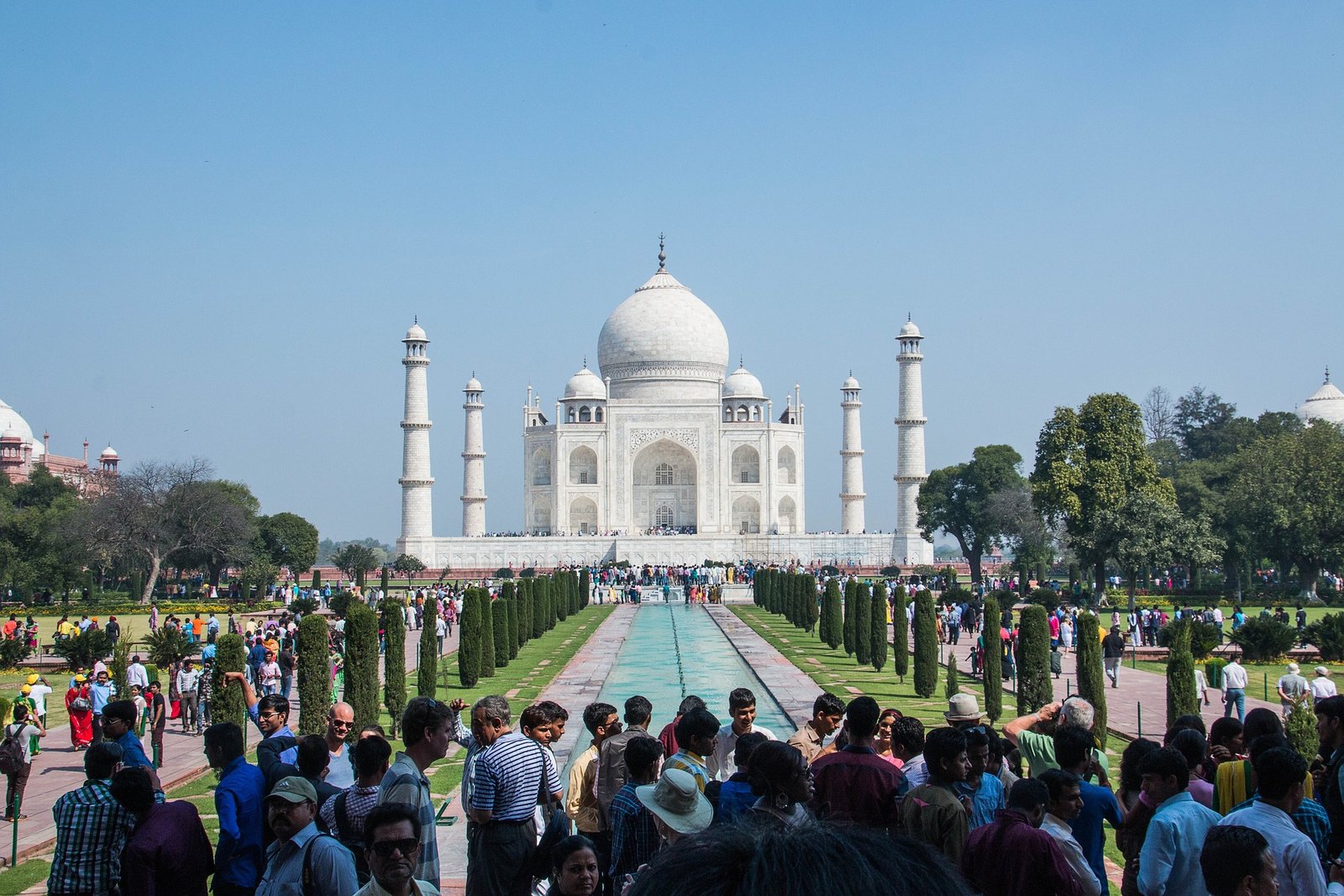
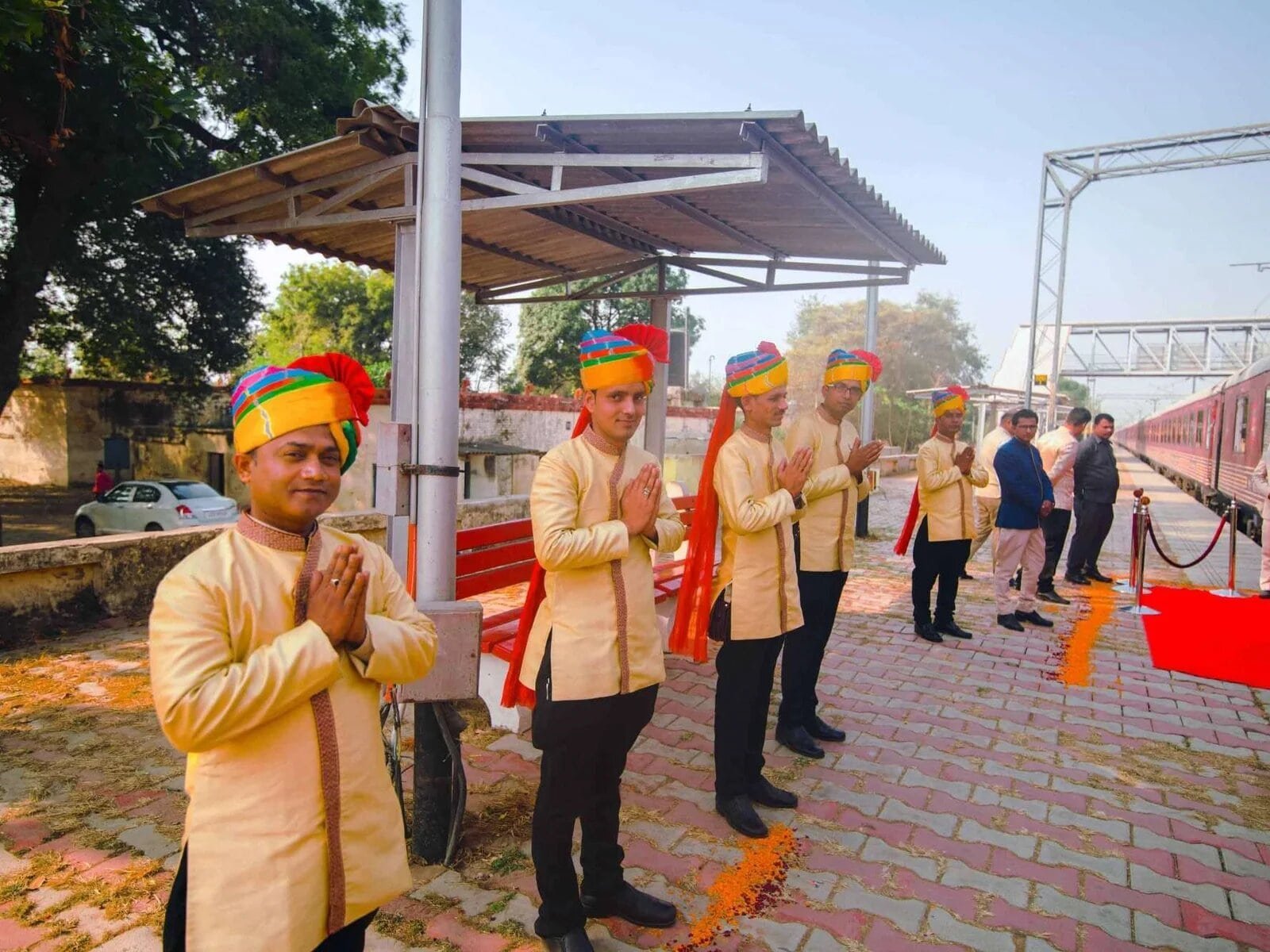
Maharajas Express – Luxury Train Journey in India
For those seeking an opulent travel experience, India offers the epitome of luxury with the Maharajas’ Express. This lavish train, known for its regal comfort and exquisite service, takes travelers on a journey through some of the most iconic and historically significant destinations in India. With four meticulously crafted routes, the Maharajas’ Express ensures an unforgettable holiday that blends heritage, luxury, and adventure.

The Maharajas’ Express is more than just a mode of transport; it is a moving palace that encapsulates the grandeur of India’s royal past. This luxury train offers spacious cabins, fine dining, and a range of modern amenities designed to provide the utmost comfort. Each journey on the Maharajas’ Express is a celebration of India’s rich cultural tapestry and architectural wonders.
Routes and Destinations
The Treasures of India
This route takes travelers on a whirlwind tour of India’s cultural gems, starting with Delhi and moving to Agra to witness the magnificent Taj Mahal, an enduring symbol of love. The journey continues to Ranthambore National Park, known for its Royal Bengal Tigers, and concludes in the vibrant city of Jaipur.
The Indian Panorama
This itinerary is perfect for those looking to delve deep into India’s historical and cultural heritage. Starting in Delhi, the train travels to Jaipur, known as the Pink City, then to Ranthambore and the Taj Mahal in Agra. The route also includes stops at the erotic temples of Khajuraho, the sacred city of Varanasi, and the ancient fort city of Gwalior.

This route explores the royal heritage of Rajasthan. It includes visits to Mumbai, Udaipur, known for its stunning lakes and palaces, Jodhpur, the Blue City, and Bikaner, famous for its camel safaris and desert landscapes. The journey also covers Jaipur, Ranthambore, and Agra.
The Indian Splendor
This journey offers a luxurious tour of India’s diverse landscapes and historic sites. Starting from Delhi, it includes Agra, Ranthambore, Jaipur, and then travels to the majestic forts of Jodhpur and Udaipur, the desert city of Bikaner, and finally, Mumbai.
Iconic Stops

The Taj Mahal, one of the Seven Wonders of the World, is a highlight on multiple routes. This Mughal masterpiece, known as the Monument of Love, captivates visitors with its exquisite marble architecture and enchanting history.
Varanasi
One of the oldest cities in the world, Varanasi offers a spiritual experience with its ancient temples and ghats along the Ganges River, where daily rituals and ceremonies take place.
Jodhpur
Known as the Blue City, Jodhpur is famed for its Mehrangarh Fort, a colossal structure that offers panoramic views of the city. The bustling markets and vibrant culture make it a memorable stop.

Udaipur, the City of Lakes, enchants visitors with its romantic landscapes, palaces, and serene lakes. The City Palace complex and a boat ride on Lake Pichola are must-experience activities.
Jaipur
The Pink City, Jaipur, is renowned for its historic forts, palaces, and vibrant bazaars. Highlights include the Amer Fort, Hawa Mahal, and an exclusive elephant polo match at the City Palace.
Ranthambore
Famous for its wildlife sanctuary, Ranthambore National Park is a prime destination for spotting Royal Bengal Tigers in their natural habitat.
Bikaner
Known for its camel safaris and stunning sand dunes, Bikaner offers a unique desert experience. Enjoy a sundowner cocktail and barbecue amidst the dunes for a truly royal experience.
Khajuraho
Home to UNESCO World Heritage-listed temples, Khajuraho is famous for its stunning erotic sculptures and intricate temple architecture.
Gwalior
A historic city, Gwalior boasts the magnificent Gwalior Fort, a structure that has witnessed centuries of history and offers stunning views of the city.
Unforgettable Experiences
The Maharajas’ Express offers exclusive excursions that enhance the luxury travel experience. Guests can enjoy sundowner cocktails in the sand dunes of Bikaner, participate in an elephant polo match at Jaipur’s City Palace, or indulge in a champagne breakfast overlooking the Taj Mahal at the Taj Khema. Each moment aboard the Maharajas’ Express is crafted to provide an unparalleled journey through the wonders of India.
Embarking on a journey with the Maharajas’ Express is not just about traveling from one destination to another; it is about experiencing the grandeur and richness of India’s heritage in the most luxurious manner possible. These royal train journeys offer a unique blend of history, culture, and luxury, ensuring that every moment spent is filled with unforgettable memories. Discover the essence of Incredible India on the Maharajas’ Express and create stories that will last a lifetime.
Delhi: A Dynamic Blend of History and Modernity
Delhi, the capital city of India, is a vibrant metropolis that seamlessly blends historical grandeur with contemporary dynamism. As one of the oldest cities in the world, Delhi offers a rich tapestry of cultural, historical, and modern attractions.
Delhi’s historical significance is evident in its iconic landmarks. The Red Fort, a UNESCO World Heritage site, and the majestic Qutub Minar showcase the architectural brilliance of the Mughal era. Humayun’s Tomb and India Gate are other notable historical sites that attract millions of visitors annually.
The city is a cultural melting pot, home to diverse communities and traditions. Chandni Chowk, one of the oldest and busiest markets, offers a glimpse into the city’s vibrant street life and culinary delights. Festivals like Diwali, Holi, and Eid are celebrated with great fervor, reflecting Delhi’s multicultural ethos.
Modern Delhi boasts impressive infrastructure, with skyscrapers, shopping malls, and world-class dining options. Connaught Place is a bustling commercial hub, while Hauz Khas Village offers trendy cafes and art galleries. The city’s efficient metro system makes commuting convenient for residents and tourists alike.
Delhi is a city of contrasts, where the past and present coexist harmoniously. Whether exploring ancient monuments, enjoying cultural festivals, or experiencing modern urban life, Delhi offers something for everyone. Its rich heritage and dynamic lifestyle make it a must-visit destination in India.
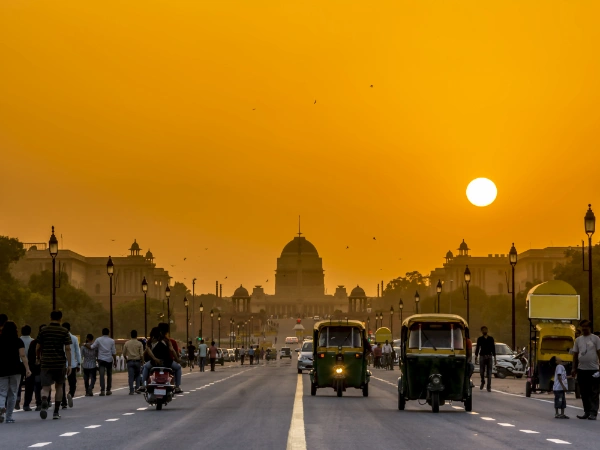

Delhi: A Cultural and Historical Tapestry
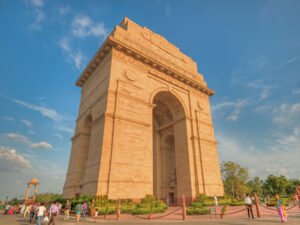
Historical and Cultural Significance
Delhi’s history dates back to the mythological era, with Indraprastha, believed to be the precursor to present-day Delhi, serving as the capital of the Pandavas in the Mahabharata. Over time, eight additional cities emerged around Indraprastha, including Lal Kot, Dinpanah, Ferozabad, Tughlakabad, Siri, Quila Rai Pithora, Jahanpanah, and Shahjahanabad. These cities witnessed political upheavals and transitions from the Tughlaq and Khilji dynasties to the Mughals.
As India’s political epicenter, Delhi has been at the forefront of political activities for centuries. The city’s architecture, from the Red Fort and Jama Masjid to Rashtrapati Bhavan and Parliament House, reflects its storied past and contemporary significance.
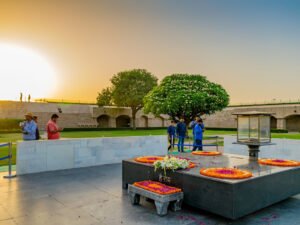
Delhi is not only the largest commercial hub in Northern India but also a major center for small industries. Key sectors driving the city’s economy include IT, fashion, electronics, handloom, and textiles. The best time to visit Delhi is from October to March when the weather is pleasant and vibrant festivals enliven the city.

No holiday in India is complete without exploring both Old and New Delhi. Old Delhi offers a glimpse into the city’s Mughal past:
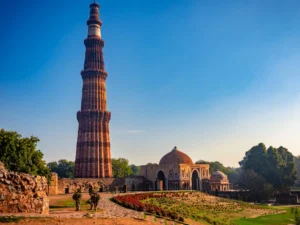
Delhi’s rich heritage, from its ancient roots as Indraprastha to its current status as India’s capital, makes it a city of unparalleled historical and cultural depth. Its blend of old-world charm and modern vibrancy offers an unforgettable experience for every visitor. Exploring Delhi’s landmarks, markets, and cultural sites provides a comprehensive understanding of India’s diverse and dynamic history.
Jaipur, the capital of Rajasthan, is famously known as the Pink City due to its distinctive pink-colored buildings. Founded in 1727 by Maharaja Sawai Jai Singh II, Jaipur is renowned for its rich history, architectural marvels, and vibrant culture.
Jaipur is home to some of India’s most iconic landmarks. The Hawa Mahal, or Palace of Winds, with its intricate latticework, offers a glimpse into royal life. The Amber Fort, perched on a hilltop, showcases stunning Rajput architecture and provides panoramic views of the city. City Palace, still home to the royal family, combines Mughal and Rajput styles and houses museums displaying royal artifacts.
Jaipur’s bustling bazaars, such as Johari Bazaar and Bapu Bazaar, are famous for traditional Rajasthani jewelry, textiles, and handicrafts. The city’s vibrant festivals, including the Jaipur Literature Festival and Teej Festival, attract visitors from around the world.
In addition to its historical charm, Jaipur offers modern amenities and attractions. The Jantar Mantar, an astronomical observatory, is a UNESCO World Heritage site. Nahargarh Fort and Jaigarh Fort provide stunning views and insights into the city’s military history.
Jaipur, with its blend of historical grandeur and modern vibrancy, offers a unique experience for every traveler. Its architectural wonders, cultural richness, and lively markets make it a must-visit destination in India.


Discover Jaipur on the Maharajas’ Express
Explore the rich heritage of Jaipur aboard the luxurious Maharajas’ Express. Discover the Pink City’s vibrant culture, magnificent palaces, and exquisite cuisine on a royal journey.
Jaipur, the vibrant capital of Rajasthan, is a destination that seamlessly blends history, culture, and luxury. Aboard the Maharajas’ Express, travelers can experience the grandeur of this Pink City in a unique and unforgettable way. The Maharajas’ Express, known for its opulence and world-class amenities, offers an exquisite journey through Jaipur, allowing tourists to delve deep into the city’s royal past and rich traditions.

Upon arriving in Jaipur, passengers of the Maharajas’ Express are greeted with traditional Rajasthani hospitality, complete with a grand welcome ceremony. This sets the tone for a regal exploration of the city.
Historic Landmarks
Jaipur is home to some of India’s most iconic landmarks. The journey includes visits to the majestic Amber Fort, a stunning example of Rajput architecture perched on a hilltop, and the City Palace, a complex that showcases a blend of Rajasthani and Mughal styles. The Hawa Mahal, or Palace of Winds, with its intricate latticework, offers a glimpse into the royal lifestyle of the past.

A highlight of the visit is a traditional Rajasthani cultural performance, featuring folk dances and music that bring the vibrant spirit of Jaipur to life. The bustling bazaars of Jaipur, known for their jewelry, textiles, and handicrafts, provide an authentic shopping experience.
Gastronomic Delights
Savoring Jaipur’s cuisine is an integral part of the journey. The Maharajas’ Express ensures that passengers enjoy delectable Rajasthani dishes, offering a taste of the region’s rich culinary heritage.
Exploring Jaipur on the Maharajas’ Express is a journey through time, where the grandeur of the past meets the luxuries of the present. This royal adventure promises an unforgettable experience, making it a must-visit for discerning travelers.
Discover the majestic wildlife of Ranthambore National Park, a prime destination for tiger sightings and nature enthusiasts. Explore the lush landscapes and historic ruins on your adventurous safari.
Ranthambore National Park, located in Rajasthan, India, is a premier destination for wildlife enthusiasts and nature lovers. Known for its rich biodiversity and historic ruins, this park offers an unparalleled experience for tourists eager to witness the majestic Bengal tigers in their natural habitat.


Explore the Wild at Ranthambore National Park
Wildlife Safari: One of the main attractions of Ranthambore is its thrilling safari experience. Tourists can embark on a guided jeep or canter safari, traversing through dense forests, open grasslands, and rugged hills. The park is renowned for its high tiger population, making tiger sightings a frequent delight for visitors. Alongside tigers, Ranthambore is home to leopards, sloth bears, crocodiles, and an array of bird species, offering a comprehensive wildlife viewing experience.
Historic Ruins: Amidst the natural beauty, Ranthambore’s historic ruins add a unique charm. The ancient Ranthambore Fort, a UNESCO World Heritage Site, stands majestically within the park. Exploring this fort offers panoramic views of the park and a glimpse into the region’s rich history. The fort’s temples, palaces, and old structures evoke tales of bygone eras, enriching the visitor’s journey.
Flora and Fauna: Ranthambore’s diverse landscapes are a haven for a variety of flora and fauna. The park’s lakes, including Padam Talao and Rajbagh Talao, are picturesque spots where one can observe wildlife quenching their thirst or grazing by the water’s edge.
A visit to Ranthambore National Park promises an exhilarating adventure, blending the thrill of wildlife sightings with the serenity of nature and the intrigue of history. It’s a perfect escape for those seeking both excitement and tranquility amidst the wilderness.
Discover the enchanting beauty of Udaipur, known as the City of Lakes. Explore its majestic palaces, serene lakes, and vibrant culture for an unforgettable experience.
Udaipur, often called the City of Lakes, is one of India’s most picturesque and romantic destinations. Nestled in the state of Rajasthan, this city is renowned for its stunning palaces, serene lakes, and rich cultural heritage. The shimmering Lake Pichola, with the iconic Lake Palace floating on its waters, offers breathtaking views and serene boat rides. The majestic City Palace, perched on the lake’s eastern banks, showcases a blend of Rajasthani and Mughal architecture, narrating tales of the royal past.
Udaipur’s vibrant bazaars are a treasure trove of handicrafts, jewelry, and textiles, reflecting the city’s artistic spirit. The Jagdish Temple, with its intricate carvings, and the serene Saheliyon Ki Bari gardens are must-visit spots. Udaipur’s rich history, combined with its natural beauty and cultural vibrancy, makes it a jewel in Rajasthan’s crown and a must-visit for any traveler.
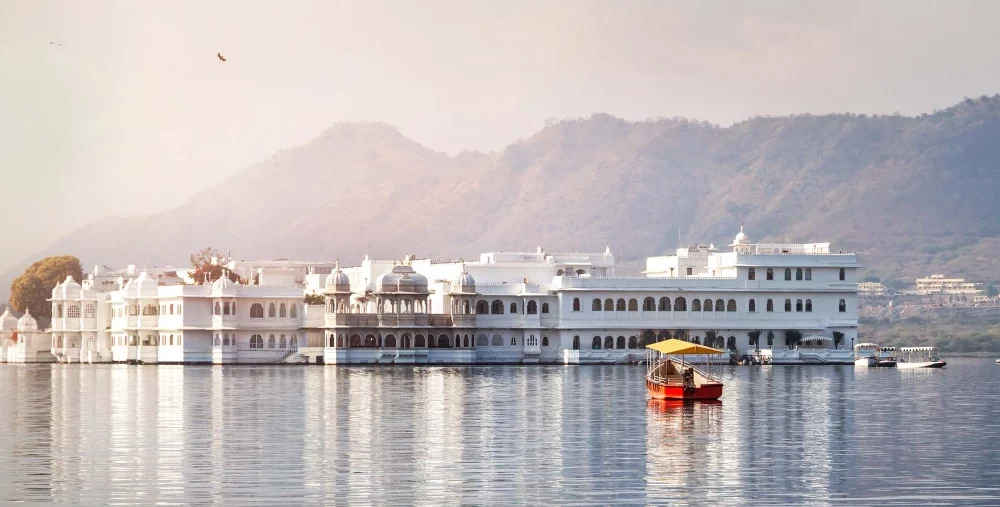

Udaipur: The Lake City of Rajasthan
Udaipur, famously known as the Lake City of Rajasthan, is a destination that captures the essence of India’s royal heritage. Nestled amidst the Aravalli hills, Udaipur’s stunning lakes, grand palaces, and vibrant culture make it a favorite among tourists seeking a blend of history, beauty, and tranquility.
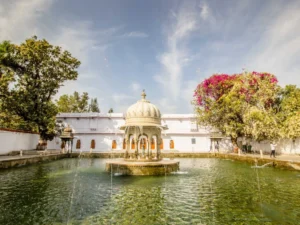
Lake Palace: Floating serenely on Lake Pichola, the Lake Palace (now a luxury hotel) is a sight to behold. Built entirely of white marble, it seems to rise out of the water, offering an ethereal experience. Even if you’re not staying there, boat rides around the palace provide mesmerizing views.
Jag Mandir: Another island palace on Lake Pichola, Jag Mandir, is a historical structure with beautiful courtyards, gardens, and marble sculptures. Known as the “Lake Garden Palace,” it offers a tranquil escape and a glimpse into Udaipur’s royal past.
Monsoon Palace: Perched atop a hill, the Monsoon Palace offers breathtaking views of the surrounding countryside and lakes. Originally built to observe the monsoon clouds, it’s a perfect spot to witness sunsets over Udaipur.
Fateh Sagar Lake: Adjacent to Lake Pichola, Fateh Sagar Lake is another picturesque spot. Tourists can enjoy boat rides to Nehru Island, visit the Udaipur Solar Observatory, or simply relax by the lake.
Udaipur’s palaces and lakes create a magical ambiance that transports visitors to a bygone era of grandeur and romance. Whether exploring majestic palaces or enjoying serene boat rides, Udaipur promises an unforgettable experience, making it a must-visit destination in Rajasthan.
Discover Jodhpur, the Blue City of Rajasthan, known for its majestic Mehrangarh Fort, vibrant blue houses, and rich cultural heritage. Explore the city’s highlights in this brief overview.
Jodhpur, famously known as the Blue City of Rajasthan, is a captivating blend of history, culture, and architectural splendor. Dominated by the majestic Mehrangarh Fort, one of India’s largest forts, Jodhpur offers panoramic views of the city and the Thar Desert. The city’s unique blue-painted houses add a distinctive charm and allure, creating a striking contrast against the sandy backdrop.
Explore the bustling markets of Jodhpur, such as Sardar Market near the iconic Clock Tower, where you can find traditional Rajasthani handicrafts, textiles, and spices. The Umaid Bhawan Palace, a blend of Indian and European architectural styles, showcases the city’s royal heritage. Additionally, Jaswant Thada, a beautiful marble cenotaph, offers a serene escape with its intricate carvings and peaceful gardens. Jodhpur’s rich history, vibrant culture, and stunning architecture make it a must-visit destination in Rajasthan.
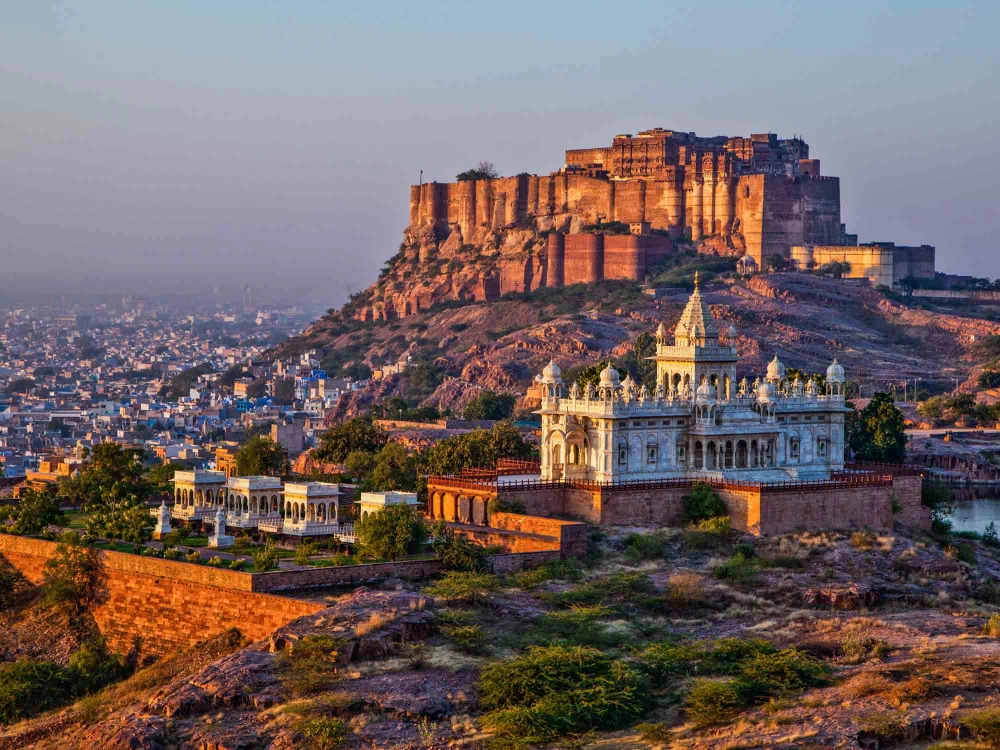
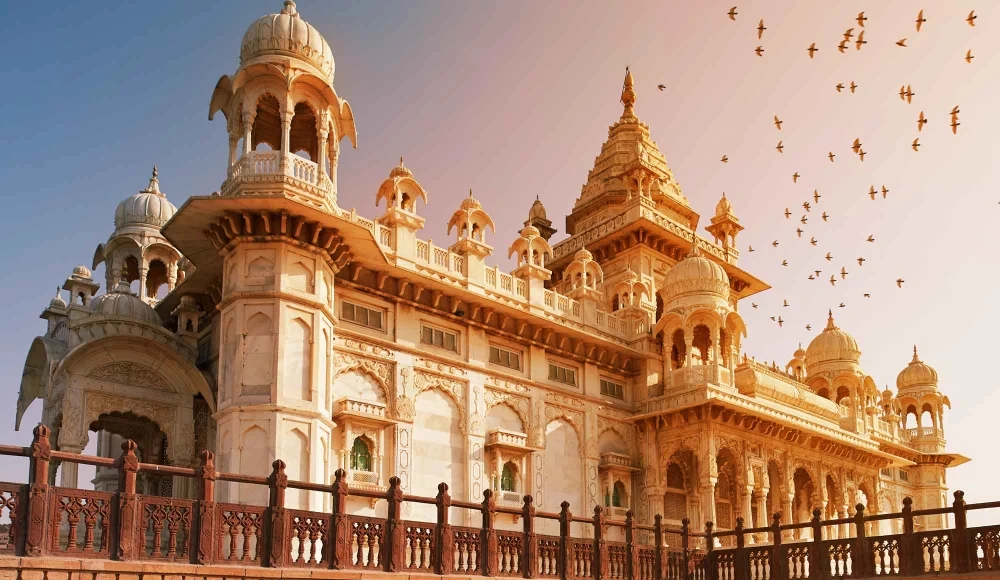
Jodhpur, the Blue City of Rajasthan, offers a rich tapestry of historical and cultural attractions that captivate every visitor. From imposing forts to serene gardens, here are the best places tourists should explore for a memorable experience.

Jaswant Thada: Located close to Mehrangarh Fort, Jaswant Thada is a beautiful marble cenotaph built in memory of Maharaja Jaswant Singh II. Known for its serene ambiance, intricate marble latticework, and picturesque gardens, it is a perfect spot for photography and relaxation.
Umaid Bhawan Palace: A splendid blend of Indian and European architectural styles, Umaid Bhawan Palace is a must-visit. Part of the palace is still the royal residence, while the other part is a luxury hotel and a museum showcasing royal artifacts and vintage cars.
Clock Tower and Sardar Market: For a taste of local life, visit the bustling Sardar Market near the iconic Clock Tower. The vibrant market offers an array of Rajasthani textiles, handicrafts, spices, and street food, making it a lively and colorful experience.
Mandore Gardens: Just a short drive from the city, Mandore Gardens is a historical site with beautiful cenotaphs, temples, and gardens. It provides a peaceful retreat and insight into Jodhpur’s ancient history.
Jodhpur’s blend of historical grandeur, cultural richness, and vibrant markets make it a must-visit destination in Rajasthan. Whether exploring the majestic Mehrangarh Fort or shopping in Sardar Market, Jodhpur promises an enriching and unforgettable experience.
Agra: A Timeless Wonder
Explore Agra, the city of the Taj Mahal, known for its Mughal heritage and architectural marvels. Discover the timeless beauty and rich history of this iconic Indian city.
Agra, located in the northern state of Uttar Pradesh, India, is globally renowned for its stunning Mughal-era monuments, the most famous being the Taj Mahal. This iconic white marble mausoleum, a UNESCO World Heritage Site, attracts millions of visitors each year with its breathtaking beauty and poignant love story.
Apart from the Taj Mahal, Agra boasts other significant historical landmarks. The Agra Fort, another UNESCO site, is a majestic red sandstone fortress that served as the main residence of the Mughal emperors. Nearby, the elegant Tomb of Itimad-ud-Daulah, often called the “Baby Taj,” showcases exquisite marble inlay work.
Agra’s rich cultural heritage is reflected in its vibrant markets, where one can find traditional crafts, textiles, and Mughal-inspired jewelry. The city’s cuisine, with its unique Mughlai flavors, offers a delightful culinary experience.
Agra’s blend of historical splendor, architectural brilliance, and cultural vibrancy makes it a must-visit destination for travelers seeking to experience the grandeur of India’s past.
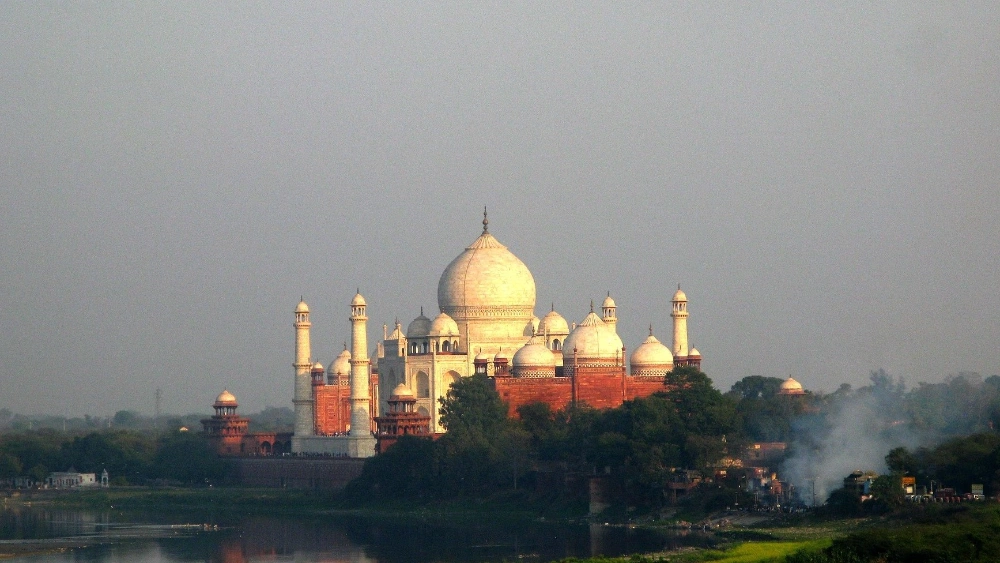
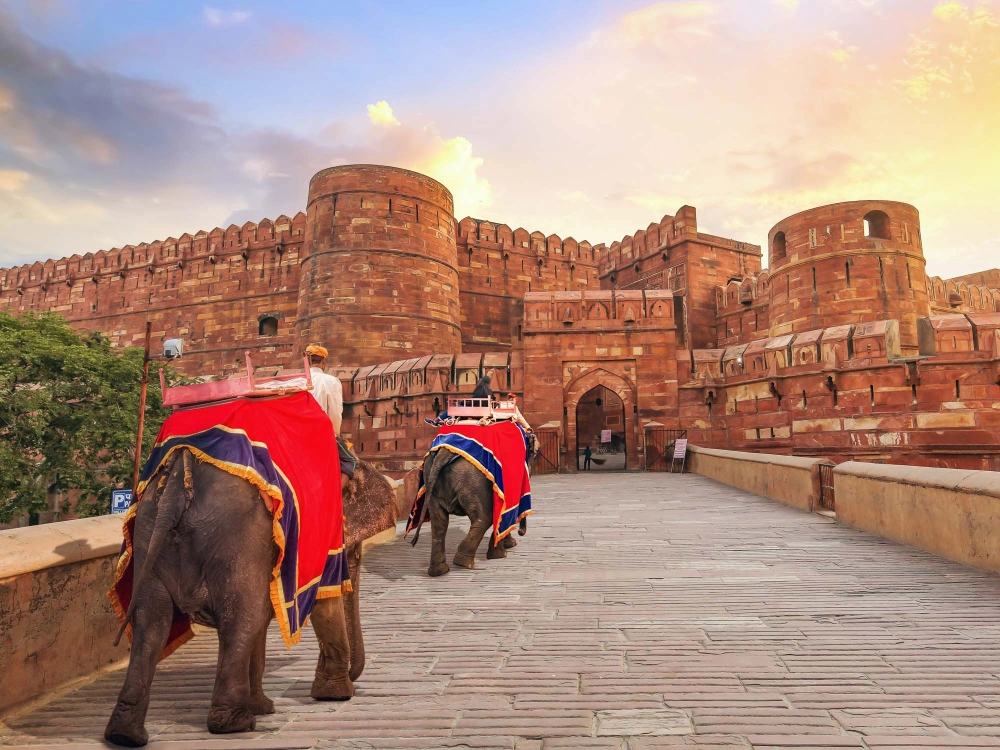
Agra: A Premier Tourist Destination
Discover Agra, a premier tourist destination known for its magnificent monuments. Explore the iconic Taj Mahal, Agra Fort, and other historical wonders in this enchanting city.
Agra, situated in the northern state of Uttar Pradesh, India, is a city steeped in history and architectural grandeur. Best known for the iconic Taj Mahal, Agra attracts millions of tourists worldwide, eager to witness its stunning beauty and explore its rich Mughal heritage.

Agra Fort: Another UNESCO World Heritage Site, the Agra Fort, is a magnificent red sandstone fortress that served as the main residence of the Mughal emperors. Within its walls, visitors can explore a series of palaces, halls, and gardens, each showcasing the grandeur of Mughal architecture.
Fatehpur Sikri: A short drive from Agra, Fatehpur Sikri is an ancient city built by Emperor Akbar. This UNESCO site features well-preserved palaces, courtyards, and mosques, reflecting the architectural brilliance of the Mughal era.
Itimad-ud-Daulah’s Tomb: Often referred to as the “Baby Taj,” this exquisite mausoleum is a precursor to the Taj Mahal and features intricate marble inlay work.
Agra, with its blend of historical marvels and cultural richness, offers a captivating experience for tourists. From the timeless beauty of the Taj Mahal to the majestic Agra Fort and the historical Fatehpur Sikri, Agra promises an unforgettable journey through India’s glorious past.
Varanasi: The Spiritual Heart of India
Discover Varanasi, the spiritual heart of India, renowned for its sacred Ganges River, ancient temples, and vibrant ghats. Explore the rich cultural and religious heritage of this timeless city.
Varanasi or Banaras , one of the oldest continuously inhabited cities in the world, is a major cultural and religious hub in India. Situated on the banks of the sacred Ganges River, Varanasi, also known as Kashi or Benares, attracts millions of pilgrims and tourists each year. The city is renowned for its ancient temples, including the Kashi Vishwanath Temple, dedicated to Lord Shiva, and the Sankat Mochan Hanuman Temple.
The ghats of Varanasi, such as Dashashwamedh and Assi, are the epicenters of daily life, where rituals, prayers, and cremations are performed. The Ganga Aarti, a daily evening ritual at the ghats, is a mesmerizing spectacle that draws visitors from around the globe. Varanasi is also a center for learning and culture, home to Banaras Hindu University and numerous classical music and dance schools.
Varanasi’s blend of spirituality, history, and vibrant culture makes it an unforgettable destination, offering a deep and enriching experience to every visitor.
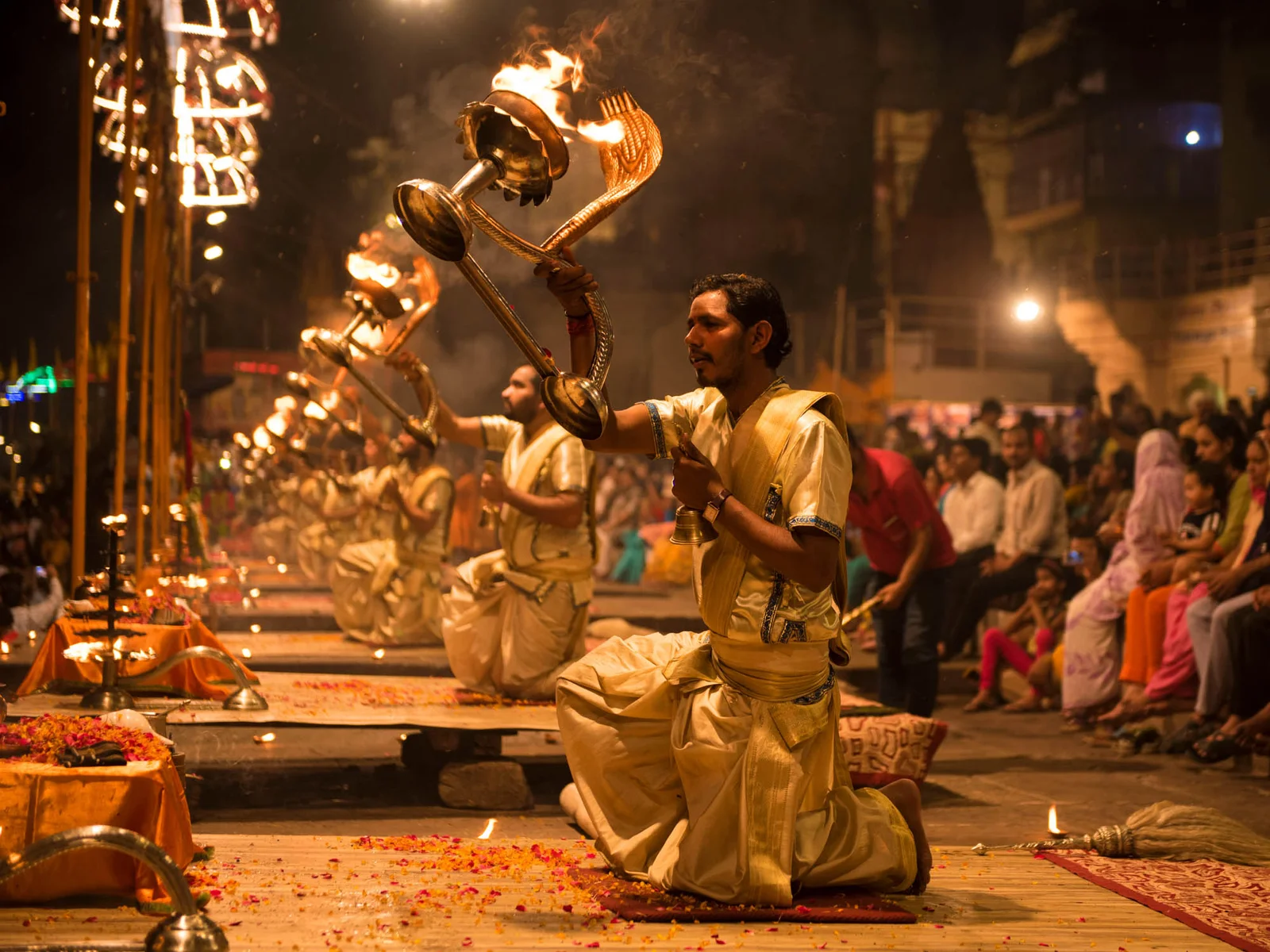
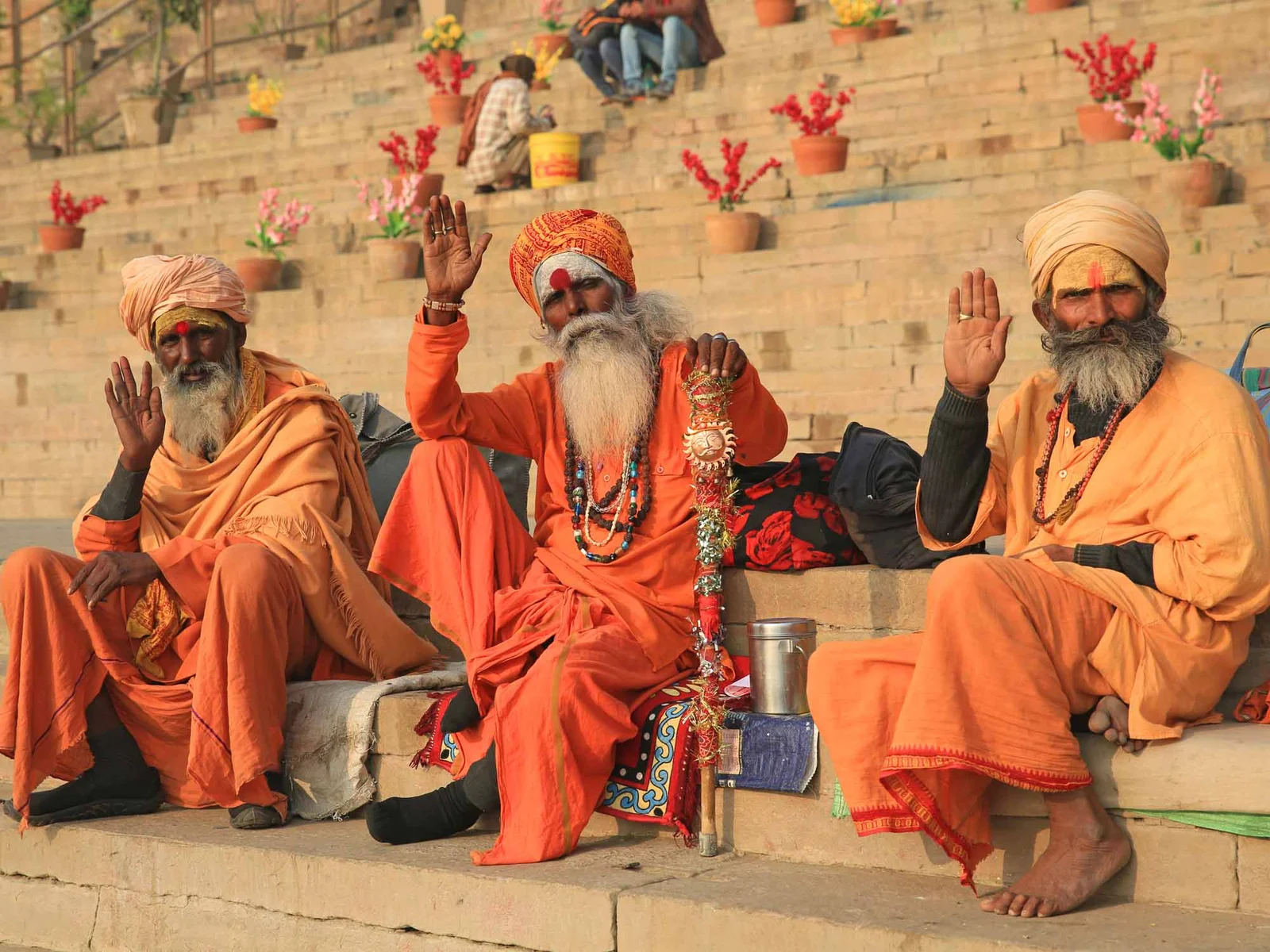
Explore Varanasi on the Maharajas’ Express
Embark on a luxurious journey to Varanasi aboard the Maharajas’ Express. Discover the spiritual heart of India with guided tours of its sacred sites and vibrant ghats.
Experience the timeless charm of Varanasi, the spiritual heart of India, in unparalleled luxury aboard the Maharajas’ Express. This royal train journey offers a unique opportunity to explore Varanasi’s sacred sites and vibrant culture, providing a seamless blend of comfort and tradition.
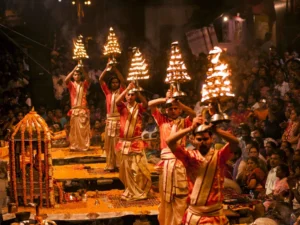
Temples and Ghats: The journey includes guided tours of Varanasi’s most revered temples, such as the Kashi Vishwanath Temple, one of the twelve Jyotirlingas dedicated to Lord Shiva. Visitors also explore the bustling ghats, where life unfolds in a continuous flow of rituals, prayers, and ceremonies.
Sarnath: A short drive from Varanasi, the ancient city of Sarnath is also on the itinerary. This Buddhist pilgrimage site, where Lord Buddha delivered his first sermon, features the Dhamek Stupa, Ashoka Pillar, and the Sarnath Museum, enriching the journey with historical and spiritual insights.
Traveling to Varanasi on the Maharajas’ Express offers a luxurious and immersive experience, showcasing the city’s spiritual essence and cultural richness. This royal adventure promises an unforgettable exploration of one of India’s most sacred destinations.
Exploring the Ghats of Varanasi
Discover the various ghats of Varanasi, each with its own unique significance and charm. From the spiritual rituals at Dashashwamedh Ghat to the tranquility of Assi Ghat, explore the heart of Varanasi.
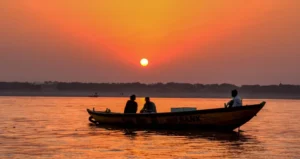
Dashashwamedh Ghat: Dashashwamedh Ghat is the most famous and busiest ghat in Varanasi. According to legend, Lord Brahma created this ghat to welcome Lord Shiva. It is renowned for the Ganga Aarti, a grand evening ceremony that attracts both pilgrims and tourists. The rhythmic chants, blazing lamps, and the fragrance of incense create a mesmerizing atmosphere, making it a must-visit.
Manikarnika Ghat: Manikarnika Ghat is one of the oldest and most sacred ghats in Varanasi. It is primarily known as a cremation ghat where Hindus believe that being cremated here offers moksha, or liberation from the cycle of rebirth. The continuous cremations occurring here underline the Hindu belief in the transience of life and the hope for liberation.

Harishchandra Ghat: Harishchandra Ghat is another important cremation site in Varanasi. Named after the mythological King Harishchandra, who worked here at the cremation grounds, this ghat holds deep religious significance. The perpetual funeral pyres are a stark reminder of the cyclical nature of life and death.
Tulsi Ghat: Named after the poet-saint Tulsidas, who composed the Ramcharitmanas here, Tulsi Ghat is associated with cultural and literary activities. The ghat is also known for its wrestling arena and the Tulsi Festival, which celebrates the works of Tulsidas.
Raj Ghat: Situated at the northern end of Varanasi, Raj Ghat marks the traditional entry point to the city. It is historically significant as it was used by royalty to access the sacred river. The ghat is quieter compared to others, offering a peaceful environment for reflection.
The ghats of Varanasi are more than just steps leading to the river; they are a microcosm of Indian culture, spirituality, and daily life. Each ghat has its unique story, rituals, and significance, making them integral to the city’s identity. Exploring these ghats provides a deeper understanding of Varanasi’s timeless allure and its place in the spiritual heart of India.
Khajuraho: A Treasure Trove of Temples
Khajuraho, located in the heart of India in Madhya Pradesh, is a small town celebrated globally for its stunning group of temples. Recognized as a UNESCO World Heritage Site, Khajuraho’s temples are renowned for their intricate sculptures and architectural grandeur, reflecting the zenith of medieval Indian art.
Western Group of Temples: The Western Group of Temples is the most famous and frequently visited section in Khajuraho. These temples, primarily dedicated to Hindu deities, showcase extraordinary craftsmanship. The Kandariya Mahadeva Temple, the largest and most ornate, is a masterpiece of Chandela architecture, adorned with over 800 sculptures of gods, goddesses, celestial maidens, and mythical creatures.
Eastern Group of Temples: The Eastern Group, predominantly Jain temples, includes the notable Parsvanath Temple, which is the largest of the Jain temples and is famed for its detailed carvings. These temples highlight the religious tolerance and cultural diversity of the region during the Chandela period.
Southern Group of Temples: The Southern Group features fewer temples but includes significant ones like the Duladeo Temple and the Chaturbhuj Temple. These temples, although less elaborate, offer unique architectural styles and serene environments.
Khajuraho’s temples are a testament to India’s rich cultural heritage and artistic excellence. The exquisite carvings and architectural splendor make Khajuraho a must-visit destination for history enthusiasts, art lovers, and spiritual seekers.
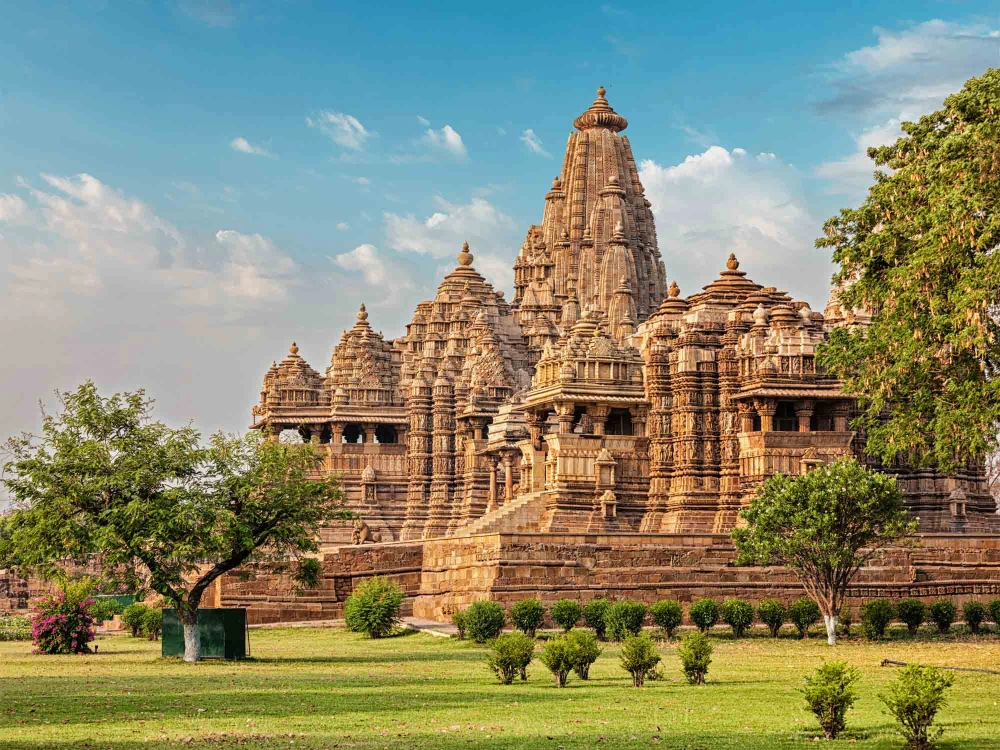
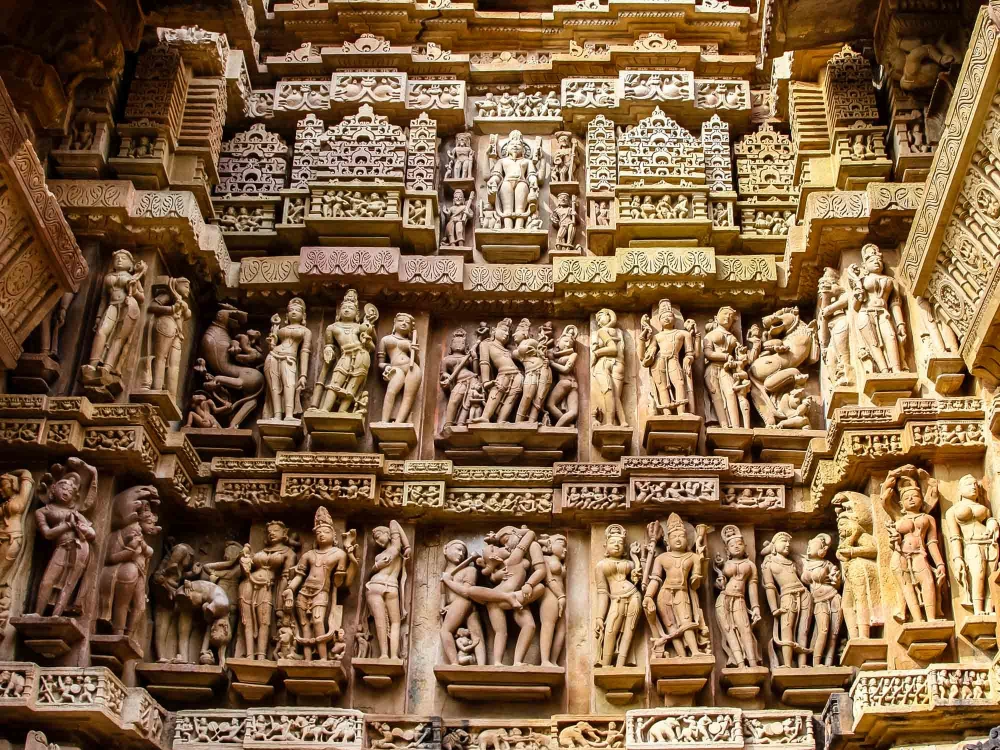
Khajuraho Temples and Light and Sound Show
Explore the majestic Khajuraho Temples, renowned for their intricate carvings, and experience the captivating Light and Sound Show that brings history to life.
Khajuraho, a UNESCO World Heritage Site in Madhya Pradesh, India, is famed for its exquisite temples that date back to the Chandela dynasty between 950 and 1050 AD. These temples are celebrated for their intricate sculptures and exceptional architectural design, offering tourists a glimpse into India’s rich historical and cultural heritage.

Eastern and Southern Groups: The Eastern Group features Jain temples, such as the Parsvanath Temple, which highlight the region’s historical religious diversity. The Southern Group includes temples like the Duladeo and Chaturbhuj Temples, each offering unique architectural styles and serene settings.
Light and Sound Show: A highlight of visiting Khajuraho is the Light and Sound Show, held every evening at the Western Group of Temples. This captivating show narrates the history, legends, and cultural significance of Khajuraho, bringing the past to life with dramatic lighting and a compelling audio narration. The show, available in both English and Hindi, is an immersive experience that enhances the understanding of the temples’ historical context.
Visiting Khajuraho offers a unique blend of historical exploration and cultural immersion. The intricate carvings of the temples, combined with the enchanting Light and Sound Show, provide tourists with a memorable and enriching experience, making Khajuraho a must-visit destination in India.
Bikaner: The Desert Jewel of Rajasthan
Bikaner, a vibrant city in Rajasthan known for its majestic forts, palaces, and camel safaris. Explore the rich heritage and unique attractions of this desert city.
Bikaner, located in the northern region of Rajasthan, is a city steeped in rich history and vibrant culture. Founded in 1488 by Rao Bika, Bikaner is renowned for its majestic forts, opulent palaces, and stunning havelis. The Junagarh Fort, a formidable structure built in the 16th century, is a major attraction, showcasing an impressive collection of artifacts, paintings, and weapons.
The city is also famous for the Karni Mata Temple, known as the Rat Temple, where thousands of rats are revered. For a unique experience, visitors can enjoy a camel safari in the surrounding Thar Desert, providing a glimpse into the traditional desert life and breathtaking sunsets. Bikaner’s bustling markets offer a variety of local handicrafts, textiles, and the city’s famous Bikaneri bhujia, a spicy snack loved across India.
With its blend of historical grandeur and desert charm, Bikaner offers a fascinating destination for tourists seeking to explore Rajasthan’s rich heritage and culture.

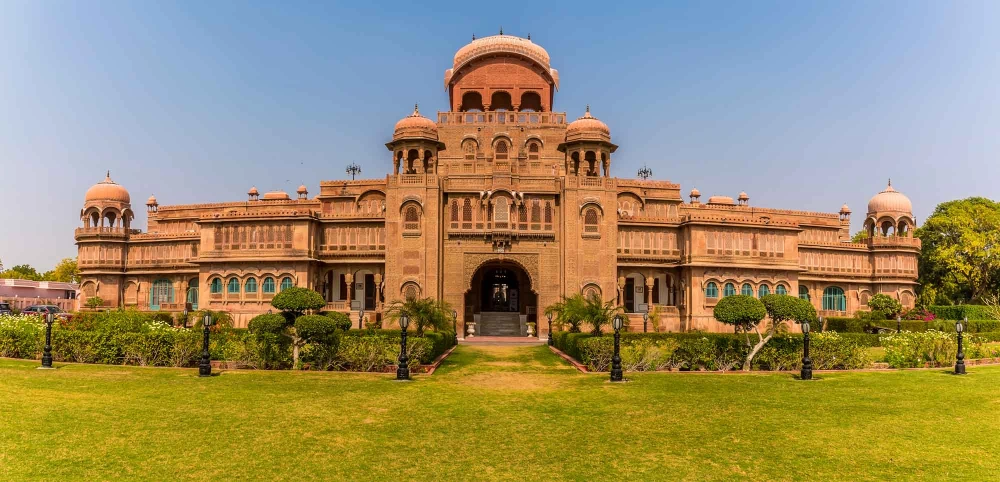
Bikaner, a vibrant city in Rajasthan, offers a fascinating blend of history, culture, and desert charm. Travelers aboard the luxurious Maharajas’ Express can delve into Bikaner’s rich heritage through its magnificent forts, unique temples, and scenic desert landscapes. Here are the must-visit places in Bikaner for tourists on the Maharajas’ Express.
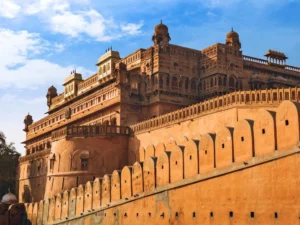
Lalgarh Palace: The Lalgarh Palace, an architectural masterpiece in red sandstone, was built by Maharaja Ganga Singh in the early 20th century. The palace combines Rajput, Mughal, and European architectural styles. Parts of the palace have been converted into a heritage hotel and a museum, displaying royal memorabilia and hunting trophies.
Ganga Golden Jubilee Museum: This museum, established to commemorate Maharaja Ganga Singh’s golden jubilee, offers a comprehensive collection of artifacts, including sculptures, pottery, paintings, and historic coins. It provides valuable insights into Bikaner’s history and culture.
Camel Breeding Farm: Bikaner is famous for its camel breeding and research center, the National Research Centre on Camel. Visitors can learn about different breeds of camels, their rearing, and enjoy camel rides. The farm also offers camel milk products, a unique treat for tourists.
Exploring Bikaner on the Maharajas’ Express provides a luxurious and insightful journey into the heart of Rajasthan’s desert culture and heritage. From the grandeur of Junagarh Fort to the uniqueness of Karni Mata Temple, Bikaner’s attractions offer an enriching and memorable experience for every traveler.
Gwalior: The Historical Gem of Madhya Pradesh
Explore Gwalior, a city rich in history and architectural marvels. Visit the magnificent Gwalior Fort, Jai Vilas Palace, and other top attractions.
Gwalior, located in the heart of Madhya Pradesh, India, is a city steeped in history and renowned for its magnificent architecture. Known for its impressive forts, palaces, and temples, Gwalior offers a fascinating journey through India’s regal past.
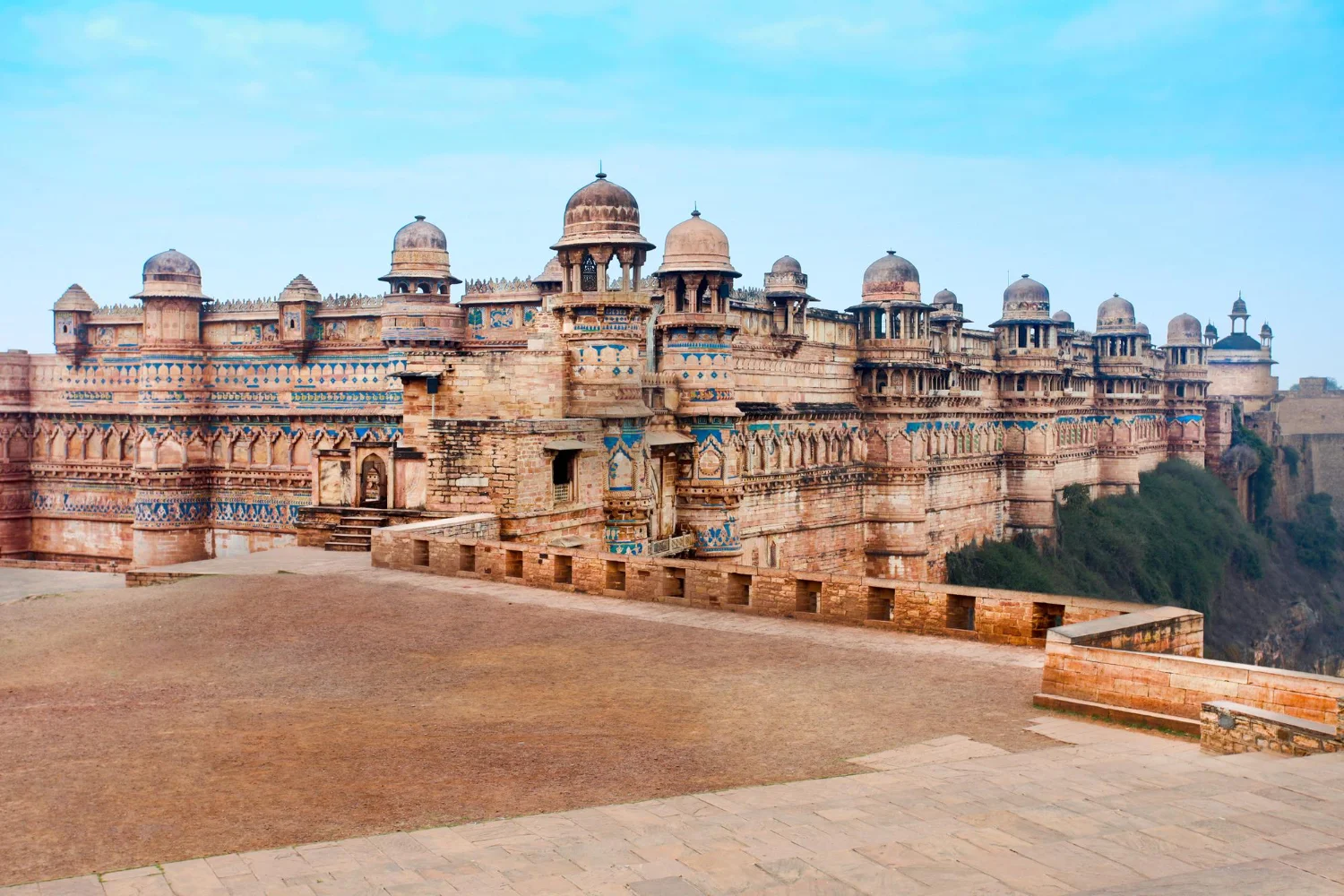

Gwalior Fort: Dominating the city skyline, Gwalior Fort is an architectural marvel and one of India’s most formidable forts. Often referred to as the “Gibraltar of India,” this massive fort complex includes several palaces, temples, and water tanks. The Man Singh Palace, with its blue-tiled façade and intricate carvings, is a highlight, while the Teli Ka Mandir and Saas Bahu Temples showcase stunning architectural craftsmanship.
Jai Vilas Palace: Built in the 19th century, the Jai Vilas Palace is a splendid blend of European architectural styles. It serves as the residence of the Scindia family and also houses the Scindia Museum, which displays an array of royal artifacts, including a silver train used to serve food at royal banquets, and opulent chandeliers.

Sun Temple: The Sun Temple, inspired by the famous Sun Temple in Konark, Odisha, is a modern yet captivating architectural site. Its intricate carvings and serene atmosphere make it a peaceful place for visitors.
Gwalior’s rich historical heritage and architectural grandeur make it a must-visit destination in Madhya Pradesh. From the imposing Gwalior Fort to the elegant Jai Vilas Palace, the city offers a unique glimpse into India’s royal past.
Mumbai: The City of Dreams
Discover Mumbai, India’s bustling metropolis known for its vibrant culture and iconic landmarks. Explore the Gateway of India, Marine Drive, and more in this dynamic city.
Mumbai, the financial capital of India, is a bustling metropolis known for its vibrant culture, historic landmarks, and lively atmosphere. Often referred to as the “City of Dreams,” Mumbai offers a diverse array of attractions that reflect its rich
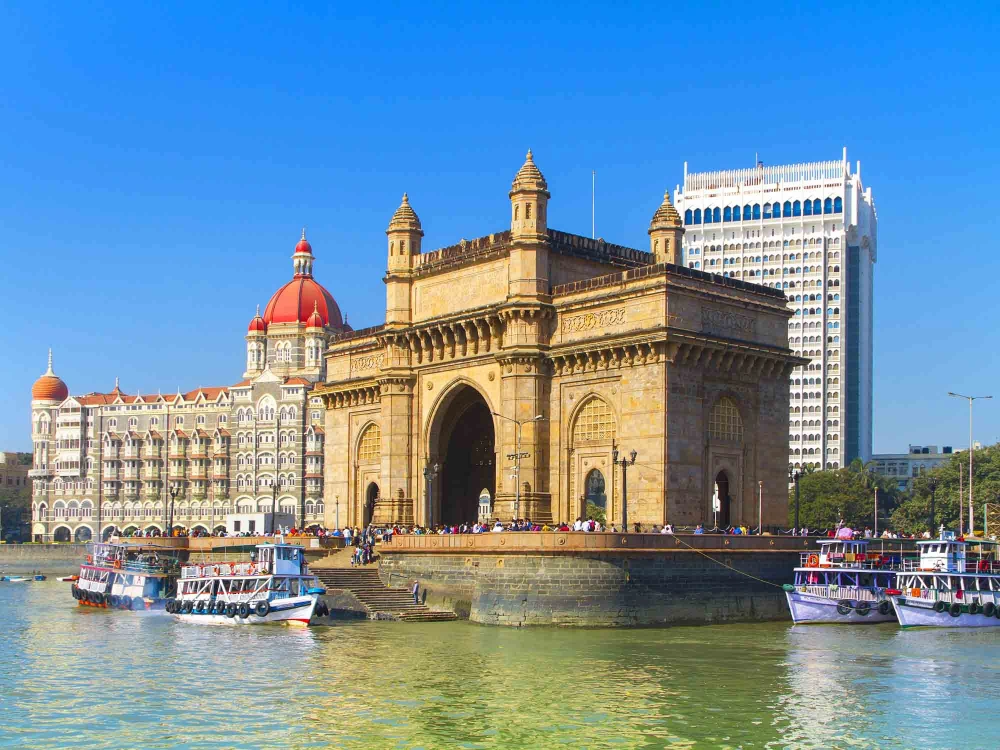

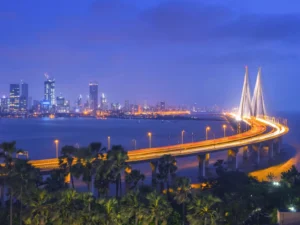
Marine Drive: Marine Drive, also known as the “Queen’s Necklace,” is a picturesque promenade along the Arabian Sea. It’s the perfect place for a leisurely stroll, offering stunning views of the sunset and the Mumbai skyline.
Chhatrapati Shivaji Maharaj Terminus: A UNESCO World Heritage Site, this historic railway station is a blend of Victorian Gothic and Indian architecture. Its intricate design and bustling atmosphere make it a must-see attraction.
Elephanta Caves: A short ferry ride from the Gateway of India, the Elephanta Caves are a UNESCO World Heritage Site featuring rock-cut temples dedicated to Lord Shiva. The intricate carvings and serene island setting provide a fascinating excursion.
Haji Ali Dargah: This iconic mosque and tomb, situated on an islet in the Arabian Sea, is accessible via a narrow walkway. It is both a pilgrimage site and a marvel of Indo-Islamic architecture.



25 Grangewood, Wexham, Slough, South Bucks – SL3 6LP, United Kingdom
great-vacation@btconnect.com
tailormadejourney@btinternet.com



WhatsApp us